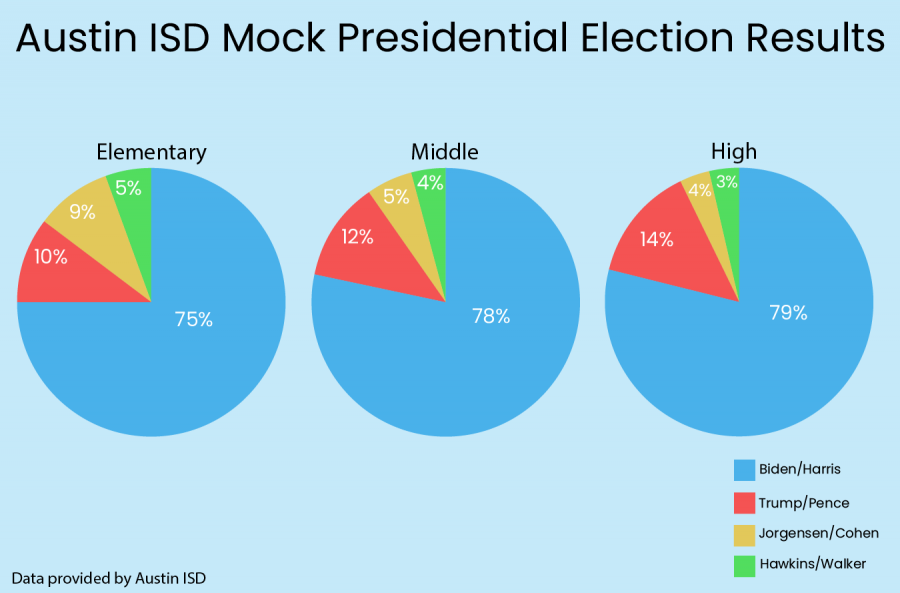AISD Mock Election: The results and student reflection
The AISD mock election 2020 results.
December 1, 2020
Austin ISD students virtually went to the polls to cast their ballots for the district’s 2020 mock election.
On October 27, students received an email from their school with the link to the ballot. The virtual polls were open from 7am to 5pm. Students were able to select their preferred candidates for President, Senate, and Congress. According to Austin ISD, over 11,000 students voted in the mock election, including 527 votes from Bowie students.
“It felt good to have my voice heard,” junior Alika Kelly said. “It’s nice to know that even though it’s a mock election, it still allows students to put their input in and see the percentage of what other students voted for.”
Data provided by the school district showed that Biden overwhelmingly won the mock election. Districtwide, Biden received 77.5% of the vote and Trump got 11.6% of the vote. Libertarian Party candidate Jo Jorgensen got 6.5% of the vote and the Green Party candidate, Howie Hawkins, got 4.4% of the vote. Results were not published for the Senate and Congressional races.
“As a social studies teacher, specifically US History, I do not think there is anything more important than participating in local, state and national elections,” social studies teacher Kaylin Brett said. “The youth holds the most power and the most ability to make change because they are a new population to add to the voters.”
Kelly hopes that the mock election will help increase student interest in the electoral process and make them want to vote when they turn 18.
“It’s important for people to vote in the mock election so they can practice for a real election and to be more interested when an actual election comes up that they can attend,” Kelly said.
Turnout in the mock election was mostly fueled by elementary and middle school students. High school students made up 18% of the total votes cast in the election while 43% of the votes were cast by middle school students. Brett credited the student council for advertising and spreading the word about the mock election but wished students were given more time to vote.
“I was disappointed [the election] could only last for one day,” Brett said. “In Texas we had 3 weeks of early voting, yet in our mock election, the district only placed it for one day. So we had 500 students participate, but I think we would’ve had more if we could accept votes for more than 1 school day.”
Like Kelly, Brett hopes that students vote when they are eligible to do so.
“It was a mock election, but I think it is important for students to participate to make it a habit,” Brett said. “If my students learn one thing from my class, I hope that they learn their voices matter and voting brings change.”







